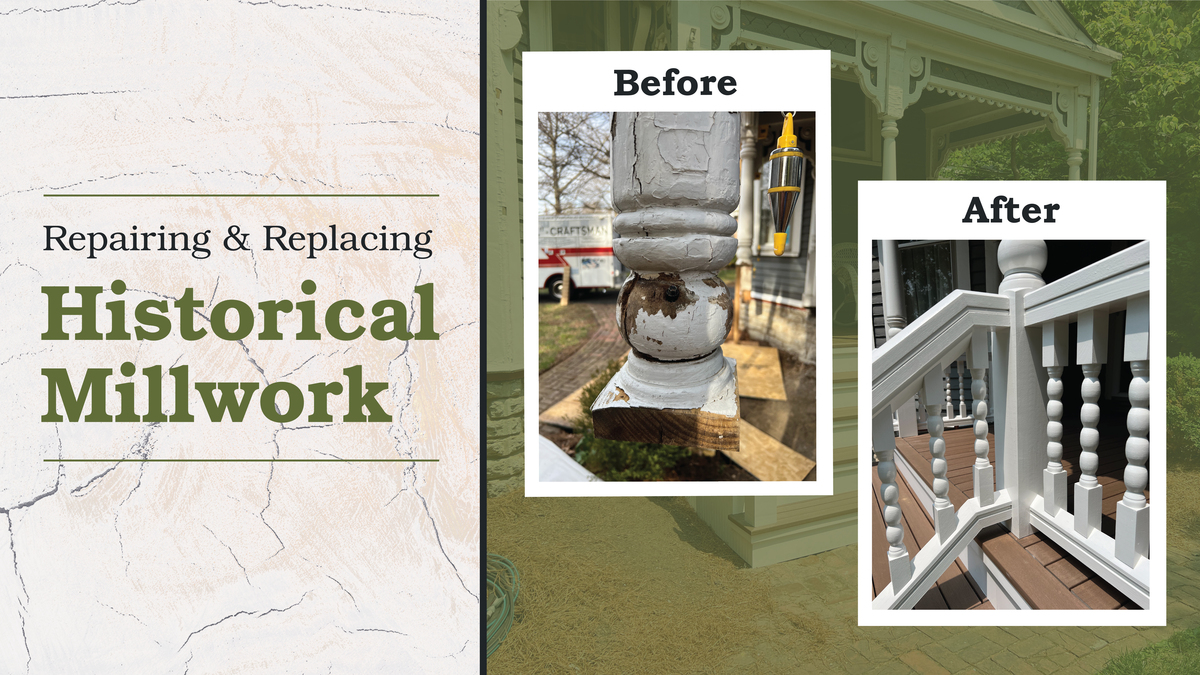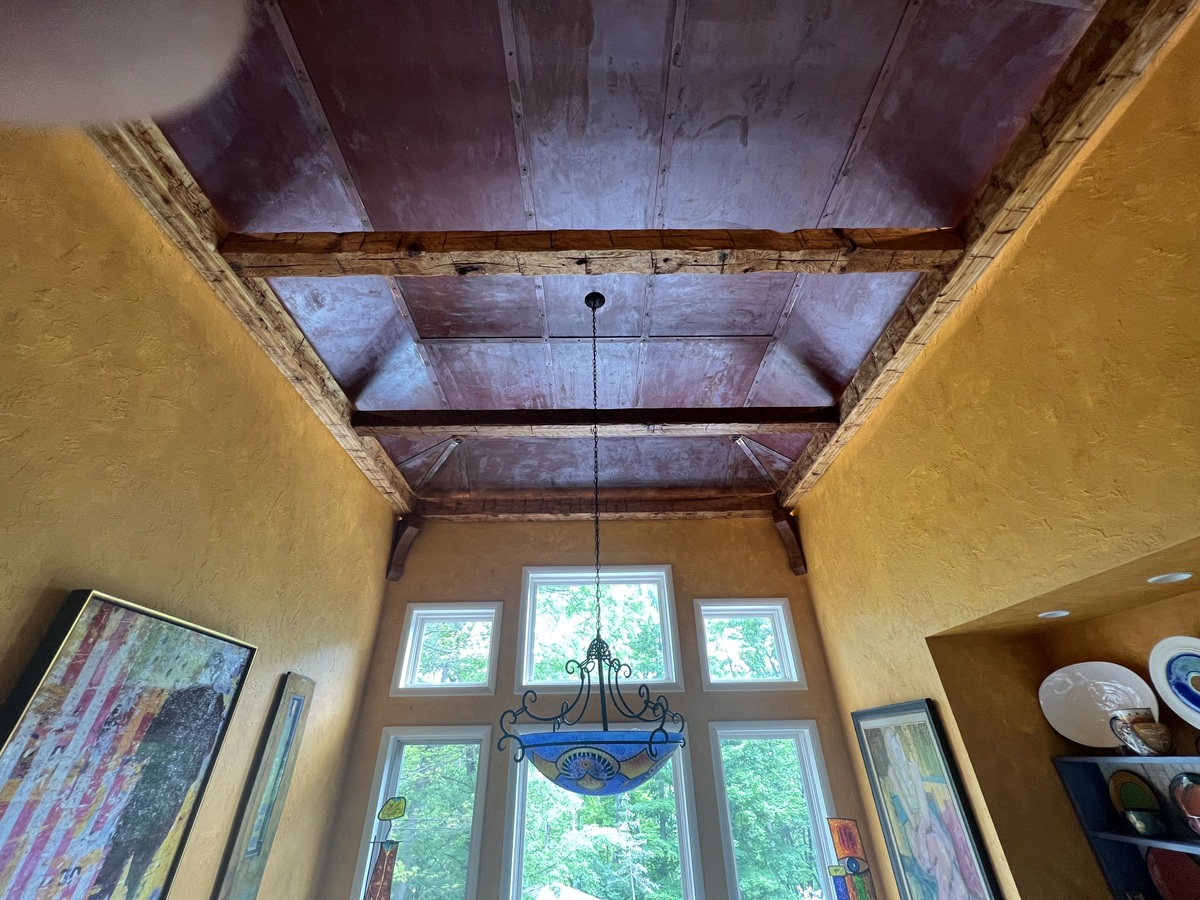Repairing and Replacing Historical Millwork

The wooden components of historical homes are often the most elegant, and the most vulnerable. These wooden components like crown molding, baseboards, window and door casings, and more are called historic millwork, and if you own a historic home or a historic building, then you know how important it is to maintain these pieces.
Historic millwork, when it is severely damaged by things like rot or mold, often cannot be repaired. Instead, it must be replicated and replaced by a skilled craftsman. Unfortunately, this means losing the original piece, but the beauty of the feature does live on.
For this reason, it is very important to be on the lookout for early signs of deterioration in these pieces and have them repaired as soon as possible. Cracks, discoloration, or chipping wood can all be signs that your historic millwork is facing deterioration and needs repair.
Let's take a deeper dive. We'll take a quick look at what historic millwork is and why it is important, how you can tell if your millwork needs to be repaired, and your options for repair or replacement. Keep reading to learn more!

What is Historic Millwork and Why is it Important?
As we said above, historic millwork is the small decorative components found in older homes and properties. Examples include (but are not limited to):
- Moldings
- Trim
- Doors and door castings
- Windows and window castings
- Staircases and balustrades
- Ceiling medallions and beams
- Fireplace mantels
If it is made of wood, it is decorative, it requires a skilled craftsman to make, and it is from the 1900s or earlier, then it is historic millwork.
Preserving historic millwork is important for several reasons. Firstly, it allows us to appreciate and understand the craftsmanship and techniques of past generations. It gives us a glimpse into the architectural aesthetics and design principles that were valued during different time periods.
Second, historic millwork contributes to the overall historic fabric and character of a property or building. When these elements are preserved, they maintain the authenticity and integrity of the structure, enhancing its cultural and historical significance. They are like a time capsule to ages past that you get to live, work, and play in.
Now that you have a better understanding of what historic millwork is, let's look at some signs it needs to be repaired.
How to Know if Your Historical Millwork Needs to Be Repaired
Over time, millwork can deteriorate due to various reasons like age, exposure to the elements, or accidental damage. It is essential to identify when your historical millwork needs repair or replacement to ensure its longevity and preserve the integrity of the building.
Cracks and Warping
One of the most apparent signs that your millwork needs professional evaluation is the presence of cracks, splits, warping, or missing pieces. These indicate structural damage and can compromise the stability of the millwork, but luckily, at this stage, it can usually be repaired.
Things like rot, water damage, or insect damage are clear signs that you need to immediately replace the affected millwork. Such damage not only affects the aesthetics but also weakens the structure. Unfortunately, if the millwork has reached the point of rotting, there is no saving the original.
Spongy Texture
Another way to identify damaged millwork is by checking its texture. If the wood feels spongy or soft, it likely indicates damage caused by moisture or pests. In some cases, millwork in this state can be repaired if it is caught very early, but if pests have bored in, then there is likely no course of action but full replacement.
Loose Joints
Loose joints or connections in the millwork can indicate broader problems or even safety threats. If the joints are not secure, it can lead to instability, increasing the risk of accidents or collapses. Typically, if loose joints are the only issue the millwork can usually be repaired by a professional craftsman.
Next, let's take a look at some of your options when it comes to repair or replacement for your historic millwork.
Your Repair or Replacement Options
When it comes to restoring historic homes and millwork, there are a few options for repair or replacement. The first step is to contact a craftsman or contractor who specializes in this type of work and has experience restoring historic homes and millwork. Always get a skilled professional on hand to evaluate the situation before you make any decisions.
If the wood is salvageable, the craftsman will clean and refinish it, as well as fill any cracks or damages to create a stronger result. This process involves carefully assessing the condition of the wood and using appropriate techniques and materials to restore its original beauty and functionality.
However, if the wood is beyond repair or cannot be salvaged, there is the option of replacing it. A qualified craftsman team (like Old School Craftsman) can replicate the piece in their workshop using CAD technology. This allows for an accurate reproduction of the original millwork, ensuring that the replacement piece matches seamlessly with the rest of the historic home. The technology we have today is truly incredible and the replication can be almost identical to the original.
Old School Craftsman is Here to Help with Your Historic Millwork
When possible, it is always preferable to repair your historic millwork rather than replace it. The millwork crafted in ages past is truly a relic of the period in which it was made. The replications that we make today are just that, replications. Nothing will ever match the original pieces, which were often made by hand using the craftsman's imagination and creativity.
To maintain the pristine beauty of the original woodwork of historic structures, it is important to work with a craftsman who knows how to repair or replace historic millwork the right way. Old School Craftsman is the best team for repairs and replacements for historic restoration projects.
We have the equipment and expertise necessary to maintain historic character and replicate the original designs created by skilled craftsmen from ages past. We want to help you maintain the beauty of your historic property; remedies that include sculpturing epoxies and epoxy injections to save the painted product before replacement is determined to be the next step forward.
Click here to reach out to Old School Craftsman today!
Follow us on Facebook, Instagram, and Pinterest for more discussion on historical homes and updates from our most recent projects.
Happy with the difference Old School Craftsman made on your home refurbishment? Leave us a five-star review here!
